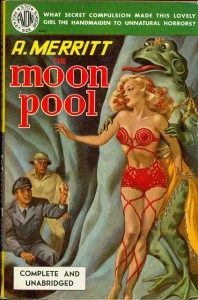Welcome to… never mind, Today’s Post is meant to be read by the clarklike Readers, we can dispense with the following 2 parts of the traditional Wakefield Doctrine Post opening:
- we already know that the Wakefield Doctrine is the theory of clarks, scotts and rogers
- the ‘Welcome to the Wakefield Doctrine!’ greeting, to a clark, is like one of those hypersonic dog whistles, we ‘look around’ at the other Readers and see that they seem to be smiling, so we assume the beginning of the Post is some sort of friendly, good-feeling generating thing…
- …otherwise, we’re already half down the Page, looking for bullet lists
So why the clark-centric approach today? Well, two main reasons:
- after writing this blog for 3 years ( 1.5 years in scottian age and 3 months by the way rogers perceive time), we look around and see that virtually everyone who is active with this thing is a clark
- something that Molly said last night on the Saturday Night Drive (paraphrasing here): ” I would never tell people I am an expert at horse training, even though I have, in fact, trained horses from beginning to end, under different circumstances, all quite successfully, but I still don’t know as much about it as I would like to.
Damn!
If I am serious about this Post being for the clarks out there, I will surpass on the explanations of: (the) ‘Damn!’ and the reason why those 13 words (in italics) are so powerful.1
To the new clarklike Readers (who are reading their very first Wakefield Doctrine blog Post: 3 personality types, 3 personal realities, accurate description of each, disparate qualities within each are connected, a simple, fun way of the seeing the world as the other person does that some of your friends will enjoy.
That will suffice for most of the new clarklike Readers.
This Post is not about disappointment about how things are going in our efforts to attract and educate people to the uses of the Wakefield Doctrine, roger
This Post is not a cry for help to have someone tell us how we can do what you mis-assume we are saying we should do, scott
This Post is for those of us who have found the fun and use in this Doctrine (and those yet to stumble upon the Wakefield Doctrine) (and) we say… ‘turn in your Outsider badge at the door, this is the house that (a) clark …. ( err, was walking along and saw a pile of building materials, and looked and called out and there didn’t seem to be anyone using the stuff, and (while we have the time) decided that we might as well see what this house would look like and somehow, even though we do not know as much about building houses as we should, the house came out pretty good and though we thought that the neighbors would be pleased and grateful for the nice addition to the neighborhood, we might as well use it ourselves…we built it after all, we don’t need no steenkin building permit) ….built.
Welcome to the Wakefield Doctrine
http://www.youtube.com/watch?v=MDEHZNirvF0
1) if you really want to know, then write us a Comment and we will respond with an explanation that will not only provide you with understanding but will enhance your ability to improve your own damn life!2
2) that is, if you want to improve your (damn) life3
3) no, scott, roger don’t get upset, we are not talking about you! lol






